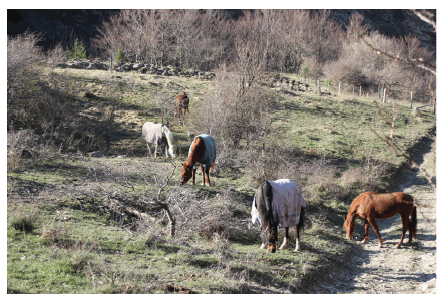White BJ*, Goehl DR, Theurer ME and Abell KM
The present trial was conducted to evaluate potential health, performance, and economic differences between calves monitored with Remote Early Disease Identification (REDI) and Conventional Visual Observation (CON). Seven replicates of high risk cattle (n=614) for bovine respiratory disease were used in the trial. In each replicate, calves were randomly allocated to REDI or CON diagnostic modality and monitored for 30 days. Performance and health outcomes were evaluated for each replicate. Net economic returns were calculated for each replicate based on health and performance outcomes combined with calf prices. A separate economic analysis was performed to evaluate the sensitivity of net returns between the REDI and CON to fluctuation in calf prices. The number of calves initially treated for BRD tended (P=0.09) to be lower in REDI compared to CON, and the percentage of second treatments, and third treatments (P<0.01) were lower for the REDI group compared to the CON group. The REDI group had higher (P<0.01) first treatment success (85.9% ± 6.1) compared to CON (63.3% ± 0.1). No other performance, health, or economic differences were identified (P>0.10). As calf prices were increased, the difference in net returns between the diagnostic modalities increased; however, the magnitude of change was relatively minor. The REDI system showed health advantages which could translate to long-term value in animal welfare. No performance or economic differences were identified in this short-term trial, but further research may elicit longer term implications.
Ricci-Bonot C* and Kiley-Worthington M
100 h (500 horse h) of critically assessed observations where analysed from two pastural situations on decision making and social networking in a herd of 5 arab and arab x horses of the Druimghigha Stud, behaviourally studied since 1978. Roles such as decision maker (the oldest mare) or follower (the youngest filly) and the popularity of each individual from whom they chose to be near were analysed. Social netwok analysis indicated the centrality of an individual, cohesive bonds among 3 mares and a sub group of the filly and the gelding. A network closure towards the gelding was also illustrated, while he attempted to build bridges to integrate into the group. Affiliative interactions and responses significantly out number aggressive ones (p<0.01) and confirm the importance of social cooperation, rather than a dominance hierarchy which is based on an assumption of competition.
These results are discussed and it is suggested that the most important reason to be social in large herbivores may be to pass on ecological knowledge to increase survival and reproductive success. To do this, individuals must learn to recognize the decision maker with the most knowledge and appropriate personality in order to remain/ become part of the group.
Graphical Abstract

Photo: Eco-Etho Research Centre, La Combe, in the mountains of La Drôme, France.
Amal A El-Daly*
Titanium Dioxide Nanoparticles (TiO2-NPs) applications are widely used in the daily life and their potential toxicity to the living organism is necessary to be insured. The nanomaterial may or may not exhibit the same toxic potential as the original material. Therefore, this study used TiO2-NPs and their original bulk to ensure their safety on the histology, immunohistochemistry and ultrastructure of the liver of male albino mice (Mus musculus). For this purpose, 25 and 50 mg/kg b.wt.; 55 μm size; anatase TiO2-NPs compared with 50 mg/kg b.wt.; 106 μm size; anatase TiO2 micro-sized (bulk form) were daily injected intraperitoneally into the mice for ten successive days. The results showed numerous alterations in the liver of anatase TiO2-NPs treated animals in a dose-dependent manner that were more than these shown in anatase TiO2-bulk material. However, histopathological disruption of the normal cellular architecture of liver, vacuolization and congestion of blood capillary following higher doses of TiO2-NPs exposure were revealed. In addition, quantitative analysis of both Bcl-2 and PCNA immunostaining density data showed significant increase as compared with the control indicating activation of apoptosis and proliferation in liver cells. Moreover, ultrastructural observation displayed dramatic potential alteration in nucleus, mitochondria, rER, numerous lysosomes, bile canaliculi and a Kupffer cell was detected. Besides, obvious agglomerations of TiO2-NPs were taken up by hepatocytes cytoplasm and its organelles, nucleus and kupffer cells. These results show that TiO2-NPs induced potential toxicity in mice liver following both doses used that varied severely when compared with TiO2-bulk form. Therefore, it could be concluded that both tested doses of nano-anatase TiO2 induced potential liver toxicity than the dose of bulk anatase TiO2.